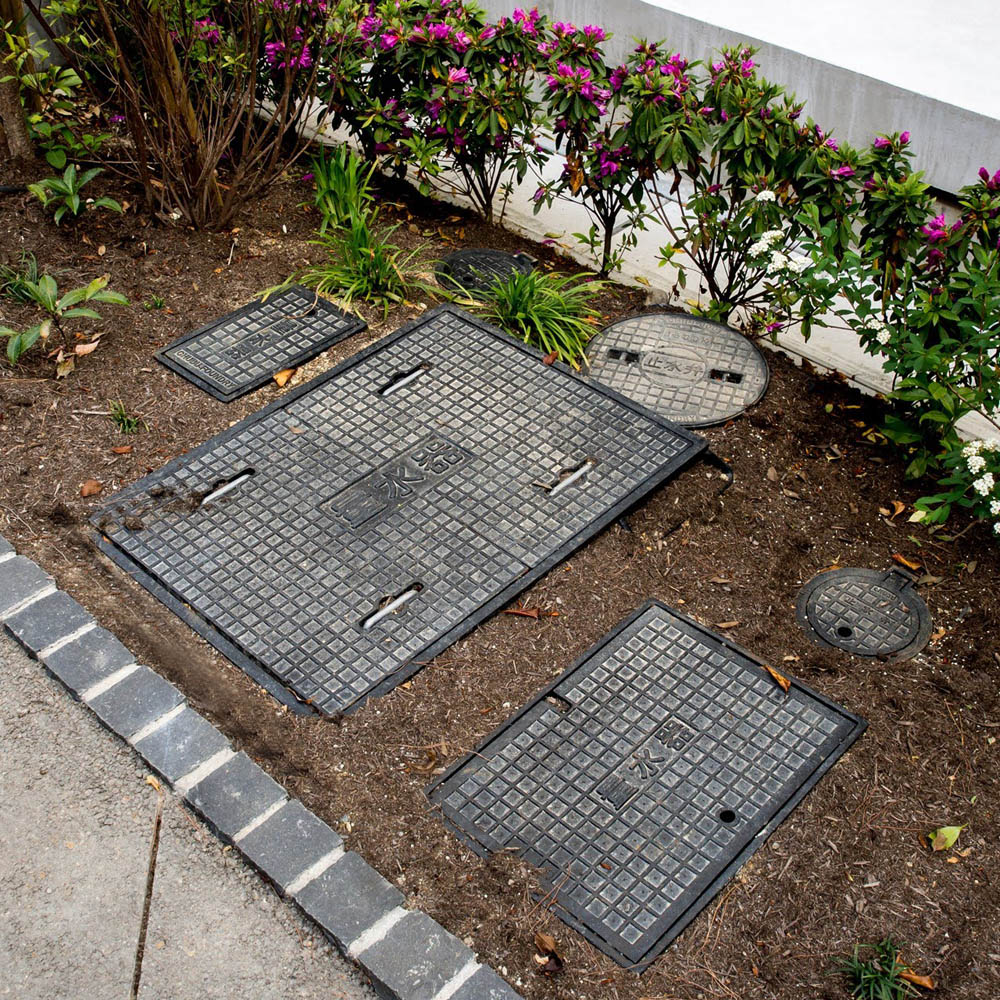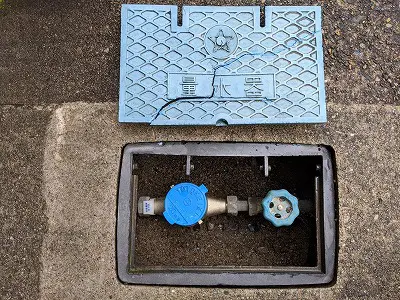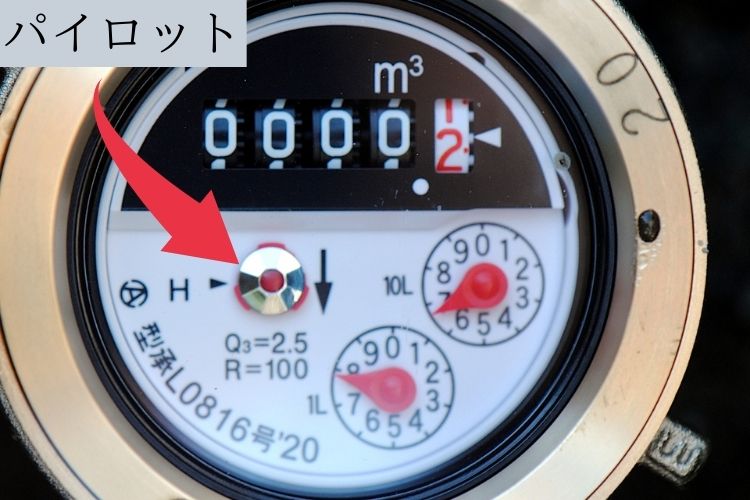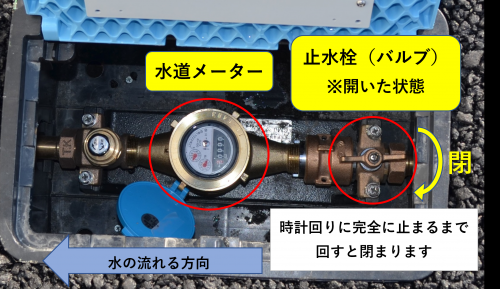
Summary:
If you experience low water pressure, discolored water, or no water at all, the issue could be inside your property or caused by a city supply disruption.
This guide explains how to check your main water valve, detect possible leaks, and know when to contact Saki Corporation for assistance.
💧 1. How to Locate Your Water Valve

In Okinawa, most properties have a main water shutoff valve inside a water meter box (量水器ボックス / ryōsuiki box).
🔹 Where to Find It:
For detached house usually outside near your entrance, parking space, or wall boundary.
-
For apartment or mansion, usually it is located inside a space next to your entrance door (outside).
In case you don' t know how to located your water valve, please contact us or check the guide we provided during your move in.
Covered by a blue or silver metal/plastic lid with the city water logo.
Inside, you’ll find:

A round water meter (with spinning dial / パイロット)

A main valve handle (looks like a small tap or lever)
Image: Water meter and shutoff valve — turn clockwise to close
🔹 To Close or Open:
Turn clockwise (right) → OFF (stops water to the entire house)
Turn counterclockwise (left) → ON (restores water supply)
⚠️ In emergencies such as leaks or burst pipes, immediately close the main valve to prevent flooding.
🚿 2. Low Water Pressure
🔹 Step 1: Check Other Faucets
Test multiple locations, bathroom, kitchen, outdoor tap.
-
If only one tap has weak pressure → the filter or aerator may be clogged.
Unscrew the faucet tip and rinse the small metal screen.
🔹 Step 2: Check the Main Valve
Confirm it’s fully open (turned all the way counterclockwise).
Sometimes valves are partially closed after repairs or cleaning.
🔹 Step 3: Check for Building-Wide Issues
Ask neighbors if they have the same issue.
-
If yes → it’s likely a city supply problem or temporary maintenance.
Check your local water bureau for updates:
💡 If pressure remains weak after 1–2 days, report to Saki Corporation by submitting a maintenance request — a plumber may need to inspect pipes or filters.
🏺 3. Dirty or Brown Water
Sometimes, water appears brown or cloudy after pipe maintenance, long absences, or typhoon recovery.
🔹 Step 1: Run the Water
Let the cold water run for 2–3 minutes to flush out the pipe.
Avoid using hot water initially, it can pull sediment into the heater tank.
🔹 Step 2: Check Nearby Taps
If only one faucet is affected → clean the aerator.
If the entire property shows discoloration → it’s likely from city water line work.
⚠️ Do not drink or cook with brown water until it clears.
If discoloration or smell continues for more than 24 hours, please submit a maintenance request.
🚱 4. No Water at All
If water suddenly stops everywhere:
🔹 Step 1: Check Main Valve
Open your water meter box and confirm the main valve is fully open.
🔹 Step 2: Check City Supply
-
Visit the local water bureau website or ask neighbors.
Sometimes water is temporarily cut due to construction or pipe bursts in the area.
🔹 Step 3: Check for Private Tanks (Common in Okinawa)
Some buildings have water storage tanks (貯水タンク / chosuī tank).
If the pump fails, water may stop flowing.
Listen for pump noise near your property, if silent, it may need reset or repair.
💡 If you have a water tank system, report immediately so our maintenance team can check the pump or float valve.
💦 5. How to Detect a Water Leak
Undetected leaks can waste water and cause property damage.
🔹 Step 1: Check the Meter
Make sure all taps are off.
-
Look at the spinning dial / パイロット on your water meter.
If it’s still spinning, water is leaking somewhere in the system.
🔹 Step 2: Inspect Inside
Check around toilets, under sinks, and behind washing machines for water pooling or dripping.
Listen for a hissing or dripping sound when the house is quiet.
🔹 Step 3: Inspect Outside
Look for wet patches on walls or ground, especially near pipes or drains.
⚠️ Leaks inside walls or under floors require immediate attention, please contact us at 098-923-0454.
🏠 6. If There Is a Leak at Your Property
🔹 Step 1: Turn Off the Water
Immediately close the main water valve in the meter box.
🔹 Step 2: Prevent Further Damage
Wipe or mop up visible water to prevent mold or damage.
Do not use electrical appliances if water is near outlets.
🔹 Step 3: Report to Maintenance
Submit a maintenance request immediately.
💡 If the leak is severe and water cannot be stopped, contact us immediately by phone, we will dispatch emergency support.
🧰 7. Preventive Tips
| Situation | Action |
|---|---|
| Before leaving for vacation | Close main water valve to prevent leaks |
| After typhoon or earthquake | Check if water runs normally |
| Monthly | Check under sinks and around washing machine hoses |
| Long-term renters | Clean faucet aerators and filters every 2–3 months |
Regular checks prevent mold, leaks, and unnecessary water bills.
Comments
0 comments
Please sign in to leave a comment.